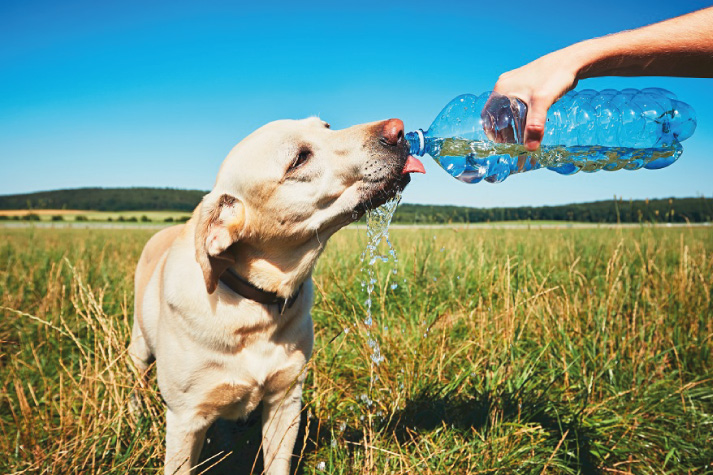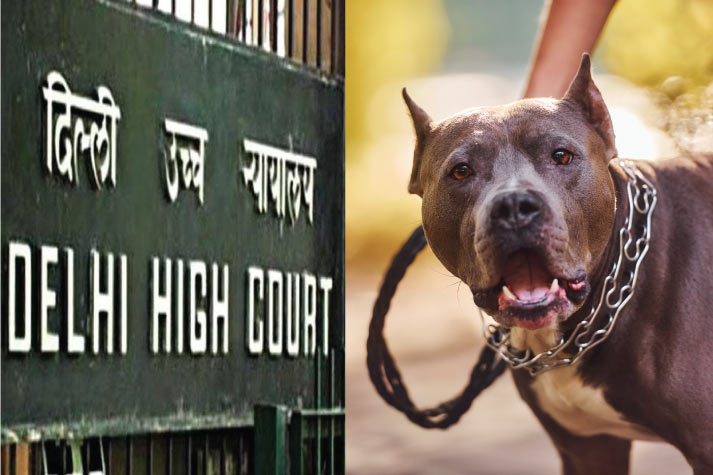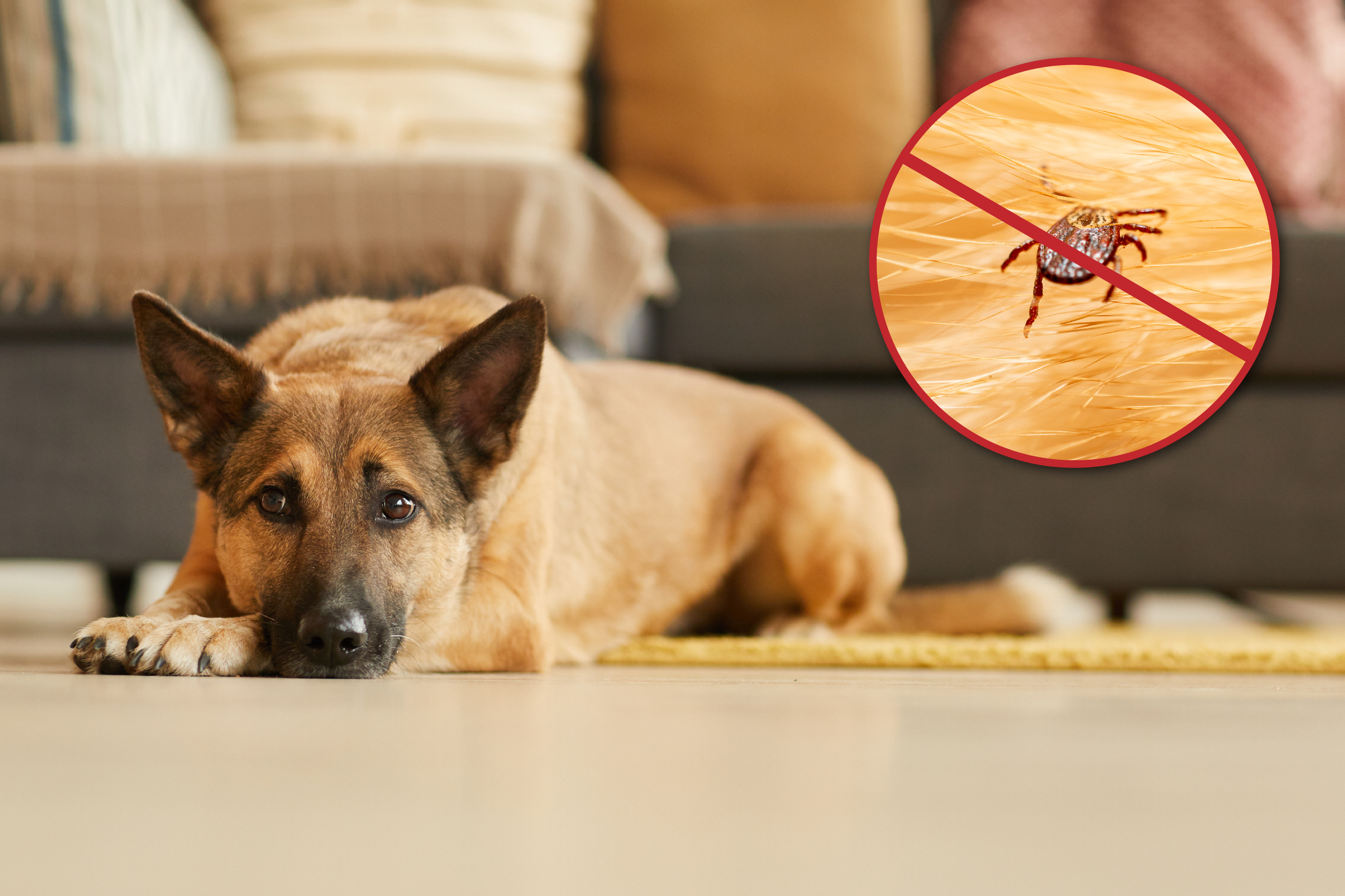
17 Mar
How to Recognize Dehydration and Heatstroke’s in Dogs
What is Dehydration?
Dehydration is a condition which affects nearly all animals. Simply put, dehydration occurs when an animal loses more fluid than they ingest. Water is essential for the survival of any animal, as it is crucial for almost every single function in its body. From helping in digestion to governing body temperature to improving blood oxygen circulation and preventing dehydration, it is a fundamental requirement for any animal.
Why is my Dog Dehydrated?
The simple answer to your dog’s dehydration is that they’re losing more fluids than they’ve consumed. A lack of water is the straightforward cause of dehydration, which may happen if your dog doesn’t drink enough water, or if they lack access to it. Dehydration may also be caused by vomiting, an illness, or diarrhea, and on rare occasions, it can be a symptom of an underlying illness. Some dogs are fussy, wherein they will not drink water unless their owner supervises them in doing so. Some dogs are of an active breed, wherein they run, work, or exercise until they lose a significant quantity of bodily fluids.
How To Tell If Your Dog Is Dehydrated
Since dogs cannot verbally convey their needs to us, it is up to the owner to recognize the symptoms of dehydration and act accordingly. Fortunately, there are symptoms through which you can identify a dehydrated dog and prevent any further harm from occurring to them. These symptoms include:
- Vomiting
- Loss of appetite
- Lethargic behaviour/lack of energy
- Dry nose
- Dry gums
- Loss of elasticity in their skin
- Sunken eyes (dry-looking eyes)
What is a Heatstroke?
A dog is said to be experiencing a heatstroke if its body temperature exceeds 40.5 degrees Celsius (105
degrees Fahrenheit). Heatstroke typically occurs when the environmental temperature is high, and the
dog’s heat dissipation is hindered or slowed down. The severity of a heatstroke depends on the
temperature the animal reaches and for how long they were at this higher body
temperature.
Since dogs cannot sweat, they only have a few methods of cooling themselves
off. Panting is the main way a dog cools down; panting helps them intake cool air, and subsequently
evaporate moisture to cool down. While a dog can sweat through their paws, this does not provide them
with any meaningful heat dissipation
Why Does My Dog Have a Heatstroke?
As the name may imply, heatstroke occurs during hot and humid conditions. There are other contributing factors:
- Age is a factor for heatstroke. Younger pups and more senior dogs are more likely to suffer heatstroke.
- Physical fitness and weight are important to note. Out-of-shape or obese dogs are more likely to suffer heatstroke.
- Hot environments and surroundings can trigger heatstroke in a dog. for example, being locked in a hot car is among the leading causes of heatstroke in dogs.
- Dehydration is directly linked to heatstroke. Not drinking enough water overheats a pup, and consequently, causes a heatstroke.
- A sudden shift in environment or climate may manifest itself as heatstroke.
Certain breeds of dogs are more prone to heatstroke than others. Snub-nosed breeds, for example, are infamous for their laboured breathing and struggle with regulating their body temperature as a result.
How To Identify and Treat Heatstroke in Your Pup
Heatstroke is extremely dangerous for dogs. Causing hyperventilation, severe dehydration, and a drop in blood pressure, is no small matter; it can be borderline life-threatening, if not managed quickly. Therefore, it is crucial to know the signs & symptoms of a dehydrated dog who is about to suffer from a heatstroke.
Here Are Some Signs to Look Out For:
- Rapid breathing (hyperventilation)
- Dilated pupils
- Bright red tongue
- Bright red gums
- Raised heart rate
- Skin that feels hot to the touch
- Hyperactivity
Since your pup suffering a heatstroke is a serious health issue, it is important to know how to alleviate their pain and help it pass. Prevention is far, far better than cure in this case, as a dog who has experienced heatstroke is likely to be affected by one again. Since our pups cannot verbalize their discomfort to us, it is our responsibility to keep prevailing weather conditions in mind while going about our daily lives.
Here Are Some Ways You Can Help Your Pup Cope If They Happen to Be Experiencing Heatstroke:
- Walk/carry them to a cool area or some shade.
- Rub/spray/sponge them down with cool water (cool, not cold). Do not shower them with cold water or put them in a cold bath.
- Move them indoors and use a fan to cool them down.
Such a circumstance is better remedied by preparation and vigilance than it is by panicking. Acute dehydration may be dealt with, but heatstroke’s are far easier to avoid than cured. As a preventive measure, give your pup cool water, rest with them in shade in hot conditions, and never leave them unattended under the bright sunlight; be it outside or in a confined space.






AUTHOR’S BIO
Carry My Pet
Passionate pet enthusiasts and globetrotters, dedicated to easing furry friends' journeys worldwide. Penning tales of compassion at CarryMyPet, where every relocation is a tail-wagging adventure.